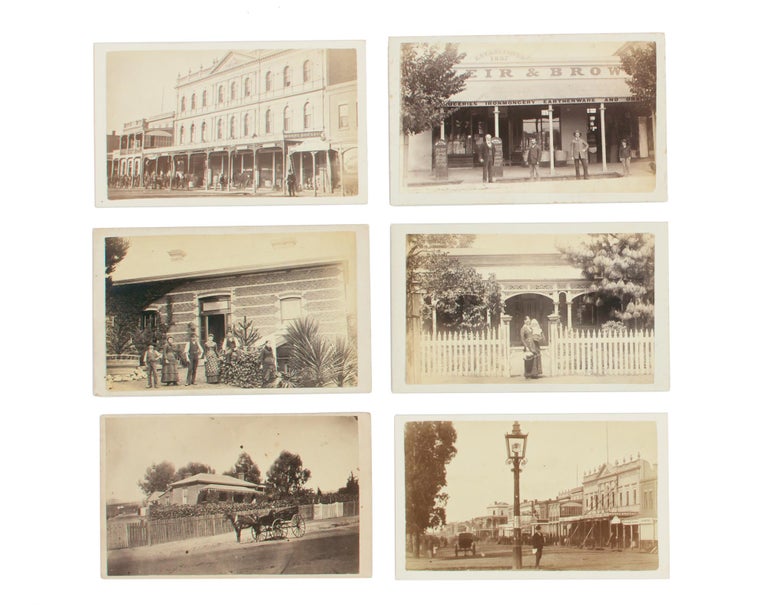
A group of six 1870s-80s photographs of Sandhurst (Bendigo), Victoria. They are all vintage outdoor cartes de visite mounted on individual cards with the photographers' details printed on the verso of four of them (Chevalier, Pall Mall, Sandhurst on one; R. Dermer Smith, Landscape and Architectural Photographer, Bull St, Sandhurst on three, one of which is dated by hand 'Nov 1883'). Davies and Stanbury record Thomas Chevalier at this address from 1865-68; they list Smith at '20 Bull Street, Bendigo' in 1898-1900, so you can amend your copy accordingly. The two uncredited images are very interesting streetscapes (featuring Pall Mall, and the Bee-Hive Stores and environs); one by Smith shows the well-stocked facade of Weir & Brown, established 1857, 'Groceries, Ironmongery, Earthenware and Drapery'; the other three depict a variety of citizens of some substance outside their residences. The photographs and their mounts are in uniformly fine condition
Gold was first discovered in 1851 at Golden Square on Bendigo Creek and the Bendigo Valley was found to be a rich alluvial field where gold could easily be extracted. It became the highest producing goldfield in Australia in the nineteenth century, and these photographs are proof of the material wealth of the relatively young city.
The town which began to develop on the goldfields was at first popularly known as Bendigo, after the creek. However, it was officially named Castleton (after the mining town in Derbyshire) in a government notice dated 2 December 1852. This name only lasted six weeks. In a second government notice, dated 18 January 1853, the name was changed to Sandhurst, after the Royal Military Academy. The nickname of Bendigo, however, always remained popular, and after a plebiscite on 28 April 1891, which had been called as a direct result of agitation about the names, the city officially became Bendigo on 4 May 1891. There are still some legacy uses of Sandhurst; for example, there is the Sandhurst Football Club, and the Roman Catholic diocese based in Bendigo is named the Diocese of Sandhurst. (This potted history is cobbled together from various online sources; it is not the result of our own post-doctoral research). [6 items].
Item #86915
Sold
